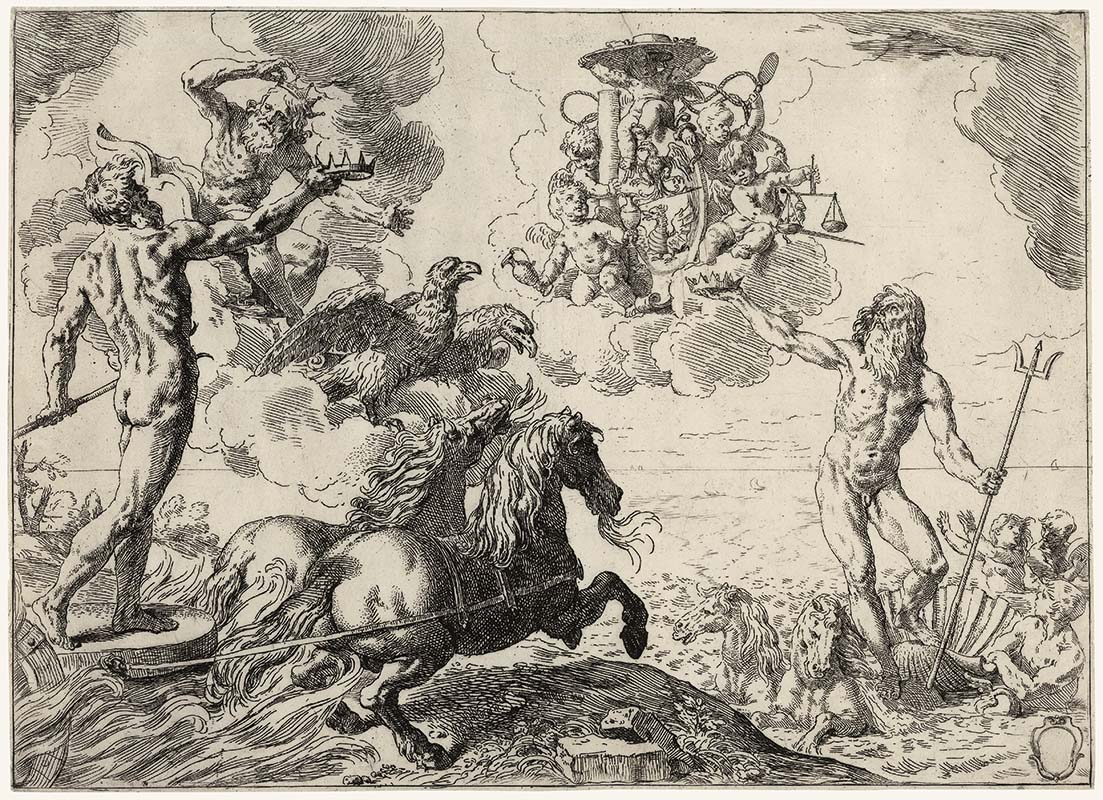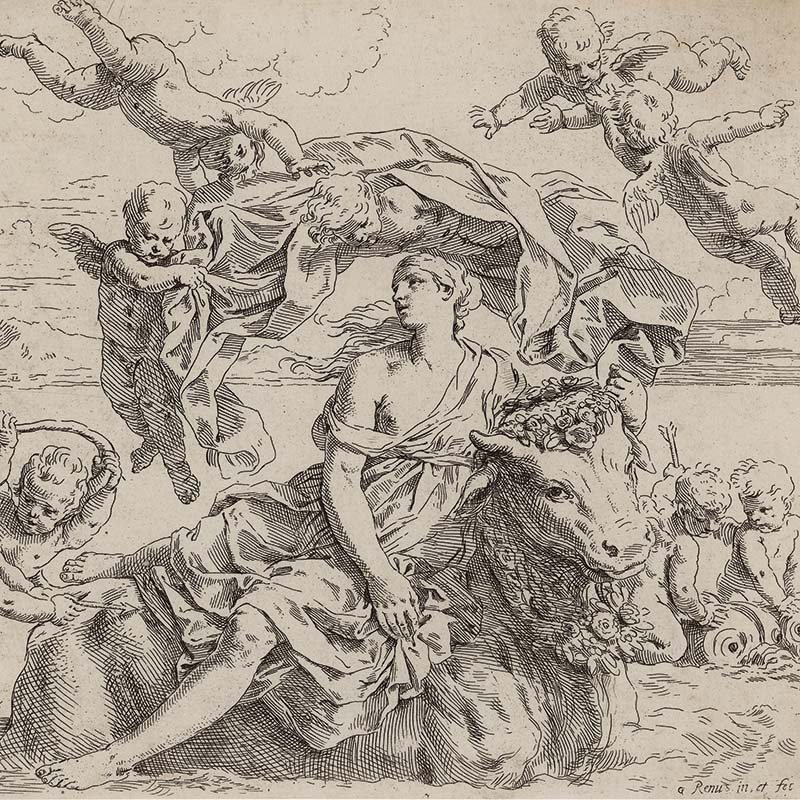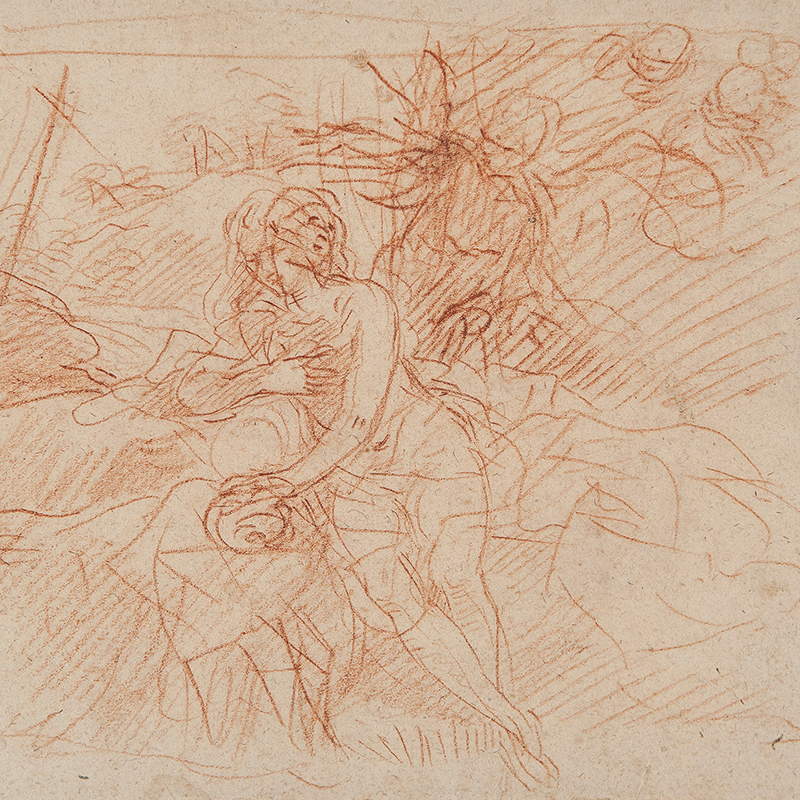Simone Cantarini
Pesaro 1612 - Verona 1648
1642 - 43
315 x 438 mm
Bartsch, vol. XIX, p. 80, no. 29; Bellini, p. 143, no. 35; Sopher, p. 48, n. 73
Provenance
Craddock & Barnard, London
An extremely fine impression, richly inked, of the second state of four, without the elephant in the cartouche bottom right and before the Borghese arms were removed from the central cartouche. On paper with watermark Cross. A few unobtrusive printer creases, in very good condition.
According to Sopher the etching can be dated to 1642/43, a dating shared also by Andrea Emiliani. The print depicts a tribute of the three pagan gods to the Arms of the Cardinal Pietro Maria Borghese, whose insignia are depicted in the central cartouche. According to Sopher, the missing papal privilege in the print leads us to think that the etching has begun in Rome but has been completed in Bologna.
This is the most ambitious and articulate etching by the artist. It differs from the other prints for dimension, importance of the subject and for the maturity of Cantarini’s style as an etcher in the later years of his life. The print represents Jupiter, identifiable by the two eagles, Pluto with its chariot of fire coming from Hades and Neptune riding his chariot wagon, in the act of offering their crowns to the insignia of Cardinal Borghese.
Price on application
Information on the master
Simone Cantarini was strongly influenced by Guido Reni in both painting and etching. Cantarini, even as a boy showed a predilection for drawing. At about the age of eleven he was apprenticed to a local artist. Sometime later the young artist went to Venice briefly. In about 1635, Cantarini entered Reni`s studio. It was here that he first began to show great promise as an etcher, working closely with Reni. This led to friction: Cantarini was loath to have his work passed off as the master`s and also rebelled against Reni`s attempt to use him to reproduce Reni`s painting in etching. After a violent break with Reni inabout 1637, Cantarini experienced hard times financially, travelling from Pesaro to Rome to Bologna, for a while earning his living chiefly by selling his etchings. In 1647 he worked, briefly and unhappily, for the Duke of Mantua in that city. He suddenly became ill there and left because of his health, reaching Verona, where he died in 1648.
Other works of the master


